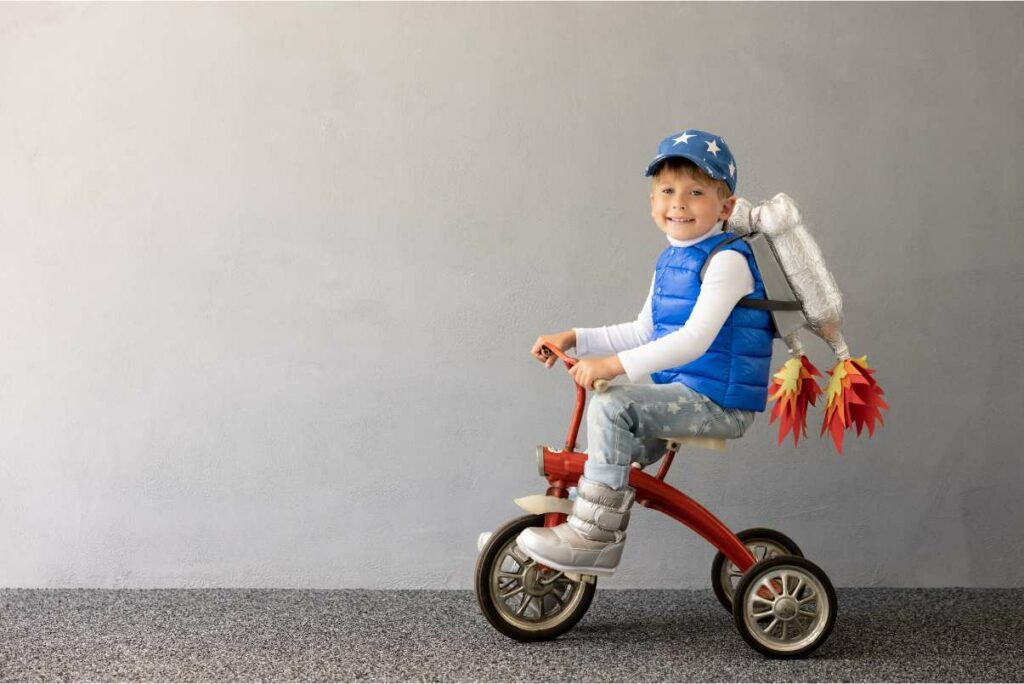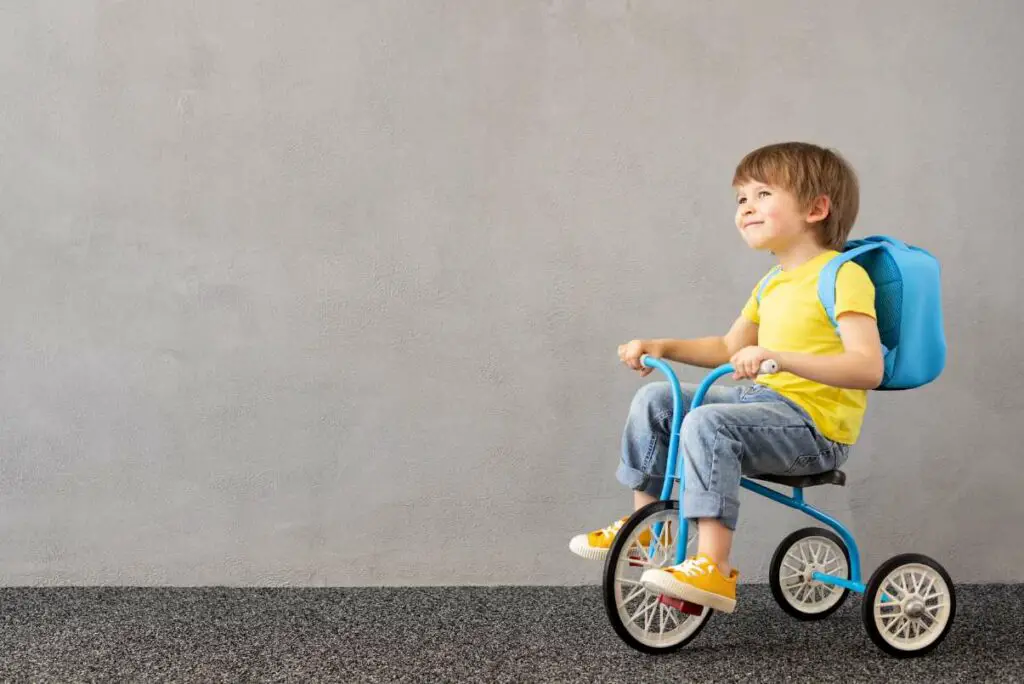What Age Are Tricycles For? An Intro To Trikes

Young children can start their bike-learning journey with tricycles, commonly referred to as “trikes,” which are a form of bicycle with three wheels.
These bikes might be an excellent alternative for kids who are just beginning to learn how to ride a bike because they are typically more stable and simple to handle than standard bikes.
But at what age should tricycles be used? In this post, we’ll look at the appropriate age range for tricycles and go over some advantages and things to think about when choosing one for a kid.

The age range for tricycles
Up until the age of five or six, children as young as 18 months can ride tricycles. However, a child’s readiness for a tricycle depends on their unique growth and aptitude.
18 months to 3 years
A tricycle can be an excellent way to teach the idea of riding a bike to youngsters between the ages of 18 months and 3 years.
Children are normally able to run and walk well at this age, and they are beginning to develop their coordination and balance.
They can improve these abilities and get ready for the next stage of learning to ride a conventional bike by using a tricycle.
3 years to 5 years
A tricycle can be a smooth transition from a balancing bike to a regular bike for kids between the ages of 3 and 5.
Children are usually more capable and coordinated at this age, and they are prepared to learn how to ride a bike with pedals.
Children can learn the skills necessary to ride a bike independently while transitioning from a balancing bike to a standard bike smoothly and gradually on a tricycle.
5 years and up
For kids aged 5 and older, a tricycle might not be required if they are already comfortable and adept at pedaling a regular bike.
For its stability and simplicity, a tricycle may still be preferred by some kids, who may continue to use one for leisurely rides or as a means to work on their balance and coordination.
Benefits of tricycles
Tricycles offer several benefits for young children learning how to ride a bike:
Stability and control
Due to their three wheels and lower center of gravity, tricycles are typically more stable and manageable than standard bikes.
They can therefore give kids who are just learning to ride a bike a sense of security and confidence, making them a suitable option.
Develop coordination and balance
Due to the fact that they must both pedal and steer, tricycles can also aid in the development of balance and coordination in kids.
They can use this to get ready for the subsequent stage of learning to ride a conventional bike.
Confidence and independence
Children can ride tricycles and feel comfortable and independent since they can quickly start, stop, and control the bike.

Considerations when selecting a tricycle
When selecting a tricycle for a child, there are a few considerations to keep in mind:
Wheel size
A tricycle’s wheel size is an essential consideration because it influences the child’s ability to reach the pedals and steer the bike.
A tricycle with a 12-inch or 16-inch wheel size is typically a decent choice for kids between the ages of 18 months and 3 years.
A tricycle with 16- or 18-inch wheels is typically an excellent choice for kids between the ages of 3 and 5.
In order to ensure that the child can easily reach the pedals and maintain correct control of the tricycle, it is crucial to select a tricycle with wheels that are the proper size for the child’s height and ability.
Weight and materials
A tricycle’s weight and construction are crucial factors as well. A child will find it simpler and perhaps more pleasant to ride a tricycle that is lightweight.
Look for a tricycle constructed of light materials, such as carbon fiber or aluminum.
Adjustability
When choosing a tricycle, adjustability is still another crucial feature to take into account.
To guarantee that the trike is cozy and suitably sized for the youngster, look for one that can be quickly modified to fit the child’s height and needs.
While some tricycles feature adjustable footrests or handlebar grips, others have adjustable handlebars and seat heights.
Brakes
While some tricycles have brakes, some don’t. However, for younger children who are just learning to ride, brakes may not be necessary.
Brakes might be useful for youngsters who are learning how to stop and regulate their speed.
Choosing a tricycle with brakes or not should depend on the child’s aptitude and self-assurance.
Conclusion
Tricycles are an excellent choice for young children learning to ride a bicycle. They can be used by infants as early as 18 months and youngsters as old as 5 or 6.
Tricycles give stability and control and can aid in the development of balance and coordination in children.
Consider the child’s age, height, and skill while purchasing a tricycle, as well as the bike’s wheel size, weight, materials, adjustability, and brakes.
